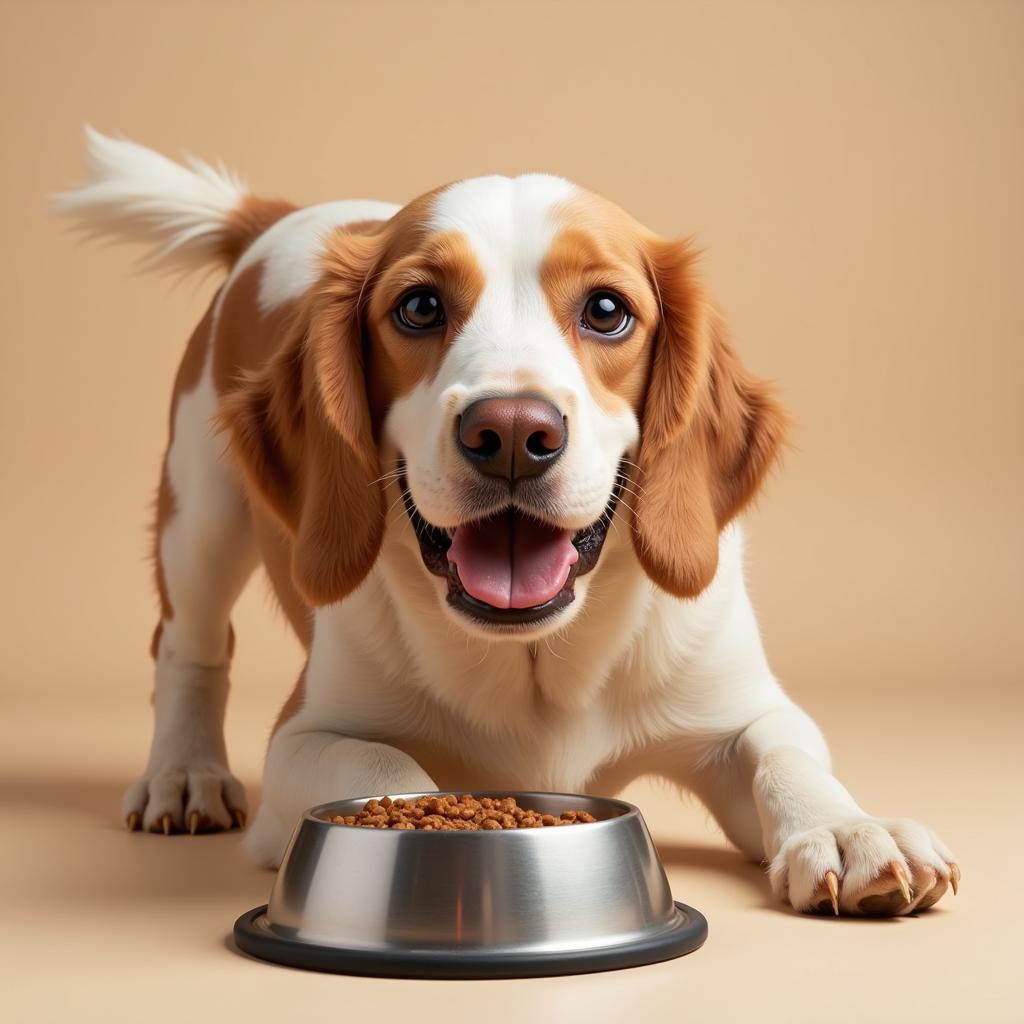Raw Pork Dog Food has gained popularity among pet owners looking for a more natural and less processed diet for their furry friends. But before you jump on the bandwagon, it’s crucial to understand the benefits, risks, and best practices associated with feeding your dog raw pork.
 Raw Pork Ingredients for Dogs
Raw Pork Ingredients for Dogs
The Benefits of a Raw Pork Diet for Dogs
Advocates of raw feeding often cite several potential benefits of raw pork for dogs:
- Increased Digestibility: Proponents believe that raw food, being closer to a dog’s ancestral diet, is more easily digested than processed kibble, potentially leading to better nutrient absorption.
- Shinier Coat and Healthier Skin: Some owners report improvements in their dog’s coat and skin health after switching to a raw pork diet, attributing these changes to the natural oils and nutrients in the raw meat.
- Improved Dental Health: Chewing on raw meaty bones can help scrape away plaque and tartar buildup, potentially contributing to better dental hygiene in dogs.
The Risks of Feeding Raw Pork to Your Dog
Despite the touted benefits, feeding your dog raw pork comes with inherent risks:
- Bacterial Contamination: Raw pork is susceptible to harmful bacteria like Salmonella and E. coli, posing a significant health risk to both dogs and humans in the household.
- Nutritional Deficiencies: Feeding a raw pork-only diet without proper balancing can lead to nutritional deficiencies in your dog. Dogs need a variety of nutrients from different sources, and solely relying on pork can create imbalances.
- Choking Hazards: Bones, especially cooked ones, can splinter and pose a choking hazard or cause internal injuries to your dog.
Is Raw Pork Safe for Dogs?
The safety of raw pork for dogs is a complex issue. While some dogs may thrive on a carefully planned and balanced raw diet that includes pork, there are inherent risks involved.
 Veterinarian Discussing Dog Food Options
Veterinarian Discussing Dog Food Options
How to Safely Prepare Raw Pork for Your Dog
If you’re considering adding raw pork to your dog’s diet, consult your veterinarian first. They can assess your dog’s individual needs and risks, and advise you on the safest approach.
- Source Your Meat Carefully: Purchase high-quality meat from reputable sources. Look for meat specifically labeled for raw consumption.
- Practice Proper Handling and Hygiene: Wash your hands thoroughly with soap and water before and after handling raw meat. Disinfect all surfaces that come into contact with the raw pork.
- Freeze Before Feeding: Freezing raw pork for at least 24 hours can help kill some parasites but may not eliminate all bacteria.
- Never Feed Cooked Bones: Cooked bones are brittle and can splinter easily, posing a serious choking and internal injury risk.
- Monitor Your Dog Closely: Watch for any signs of illness, such as vomiting, diarrhea, lethargy, or loss of appetite, after feeding raw pork. Contact your veterinarian immediately if you notice any unusual symptoms.
Homemade Raw Pork Dog Food Recipe
Remember, this is just a sample recipe and may not be suitable for all dogs. It’s essential to consult with your veterinarian to create a balanced raw diet tailored to your dog’s specific needs.
Ingredients:
- 1 pound ground raw pork
- 1/2 cup chopped raw pork heart
- 1/4 cup chopped raw pork liver
- 1/4 cup finely chopped vegetables (e.g., carrots, broccoli, spinach)
- 1 tablespoon fish oil
- 1 teaspoon ground eggshells (for calcium)
Instructions:
- Combine all ingredients in a large bowl.
- Mix thoroughly until well combined.
- Portion the food into appropriate serving sizes for your dog.
- Store any leftover food in an airtight container in the refrigerator for up to 3 days, or freeze for longer storage.
FAQs About Raw Pork Dog Food
Can I feed my dog raw pork bones?
Raw bones are generally considered safer than cooked bones, but they still pose potential risks. Choose bones that are large enough that your dog cannot swallow them whole and supervise your dog closely during chewing.
Can I mix raw pork with my dog’s regular food?
It’s not recommended to mix raw and processed food in the same meal, as they digest at different rates and could potentially upset your dog’s stomach. If you want to transition your dog to a raw diet, do it gradually over several days or as recommended by your vet.
How much raw pork should I feed my dog?
The amount of raw pork to feed your dog depends on factors such as age, activity level, and overall health. It’s best to consult your veterinarian for personalized feeding guidelines.
What should I do if my dog gets sick after eating raw pork?
Contact your veterinarian immediately if your dog exhibits any signs of illness after consuming raw pork, such as vomiting, diarrhea, lethargy, or loss of appetite.
 Healthy Dog Enjoying Meal
Healthy Dog Enjoying Meal
Raw Pork for Dogs: A Decision Best Made with Your Vet
Feeding your dog a raw pork diet requires careful consideration, planning, and strict hygiene practices. While some dogs may benefit from a well-formulated raw diet that includes pork, it’s crucial to weigh the risks and benefits carefully. Always consult your veterinarian before making any changes to your dog’s diet, especially when considering raw feeding. They can provide personalized advice and guidance to help you make informed decisions about your dog’s nutrition and overall well-being.
For more information on dog nutrition and homemade dog food recipes, check out these articles:
We are here to support you and your furry friend! If you need further assistance with raw feeding or have any concerns about your dog’s diet, don’t hesitate to contact us. Call us at 02437655121, email us at minacones@gmail.com, or visit us at 3PGH+8R9, ĐT70A, thôn Trung, Bắc Từ Liêm, Hà Nội, Việt Nam. Our dedicated customer care team is available 24/7 to answer your questions and address any concerns.